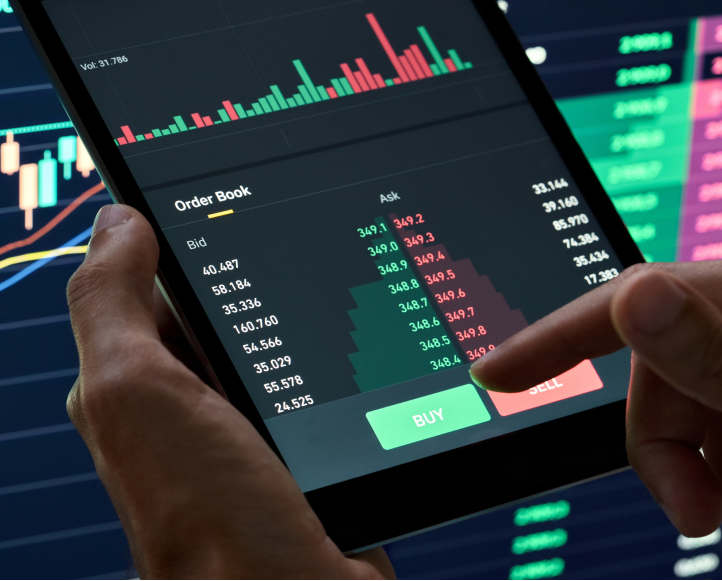
Understanding Crypto Trading Liquidity Data
The world of crypto trading is vast and complex, heavily influenced by the liquidity data of various assets. Crypto Trading Liquidity Data https://neonewstoday.com/general/neo-joins-the-blockchain-education-alliance-to-increase-exposure-to-universities/ The liquidity of a cryptocurrency is often one of the main factors that traders consider when deciding whether to buy or sell an asset. This article will delve into what liquidity data means in the context of crypto trading, why it’s essential, the factors that influence liquidity, and the tools traders can use to analyze it.
What is Liquidity in Crypto Trading?
Liquidity refers to how easily an asset can be bought or sold in the market without affecting its price. In the crypto market, liquidity is particularly crucial because many cryptocurrencies can experience significant price swings due to limited buy or sell orders. High liquidity typically means that there are plenty of buyers and sellers in the market, leading to tighter bid-ask spreads and more stable prices.
Importance of Liquidity Data
Understanding liquidity data is vital for several reasons:
- Price Stability: Higher liquidity usually results in minimal price changes when larger transactions occur, making it easier for traders to know that their trades won’t significantly affect asset prices.
- Execution Speed: A liquid market allows for faster execution of trades. Traders can enter and exit positions swiftly without waiting for buyers or sellers to appear.
- Risk Management: For traders, particularly institutional ones, being able to execute large orders without slippage is important for effective risk management. Liquidity data gives insight into the capacity of the market to absorb large trades.
- Market Sentiment: Liquidity can be interpreted as a sentiment indicator. A sudden increase in liquidity could signal rising interest in a particular asset, whereas a decrease might indicate market apathy.
Factors Affecting Liquidity in Crypto Markets
Several key factors influence liquidity in cryptocurrency markets:
- Exchange Infrastructure: Different exchanges have varying levels of liquidity. Larger exchanges like Binance and Coinbase generally maintain higher liquidity due to their vast user bases and trading volume.
- Market Depth: This refers to the market’s ability to sustain relatively large market orders without affecting the price of the asset significantly. A market with significant depth can easily accommodate large trades.
- Trading Volume: Higher trading volumes typically correlate with greater liquidity. When many traders are buying and selling frequently, it creates a more dynamic market.
- Currency Pairs: Liquidity can vary significantly between different trading pairs. Popular cryptocurrencies paired with fiat or widely-traded altcoins generally exhibit higher liquidity.
- Market Conditions: Volatility can also impact liquidity. During extreme market conditions, liquidity may dry up as uncertainty leads traders to pull back from trades.
Analyzing Liquidity Data
Traders have access to various tools and platforms that provide liquidity data to aid in their decision-making process. Here are some popular methods to analyze liquidity:

1. Order Book Analysis
The order book displays all current buy and sell orders for a specific asset. By analyzing the order book, traders can assess market depth, identify support and resistance levels, and understand how easily they can execute trades without moving the market.
2. Liquidity Metrics
Metrics such as the bid-ask spread, slippage percentage, and volume-weighted average price (VWAP) are essential for gauging liquidity. A tighter bid-ask spread and lower slippage indicate higher liquidity.
3. Trading Volume Charts
Monitoring trading volumes over time can provide insights into liquidity trends. A consistent increase in trading volume can suggest growing market interest, which typically correlates with improved liquidity.
4. Liquidity Pools
In decentralized finance (DeFi), liquidity pools allow users to provide liquidity for trades on decentralized exchanges. Analyzing the health and size of these pools can give insights into overall market liquidity and can help identify trends in asset popularity.
Conclusion
In the fast-paced world of crypto trading, liquidity is a critical factor that influences not only individual trades but also overall market stability. Understanding liquidity data can empower traders, helping them to make informed decisions in their trading strategies. As the market continues to evolve, keeping an eye on liquidity trends will be essential for both novice and experienced traders alike. With the growing tools and analytics available, traders can continually refine their approaches, adapting to the ever-changing landscape of cryptocurrency trading.














